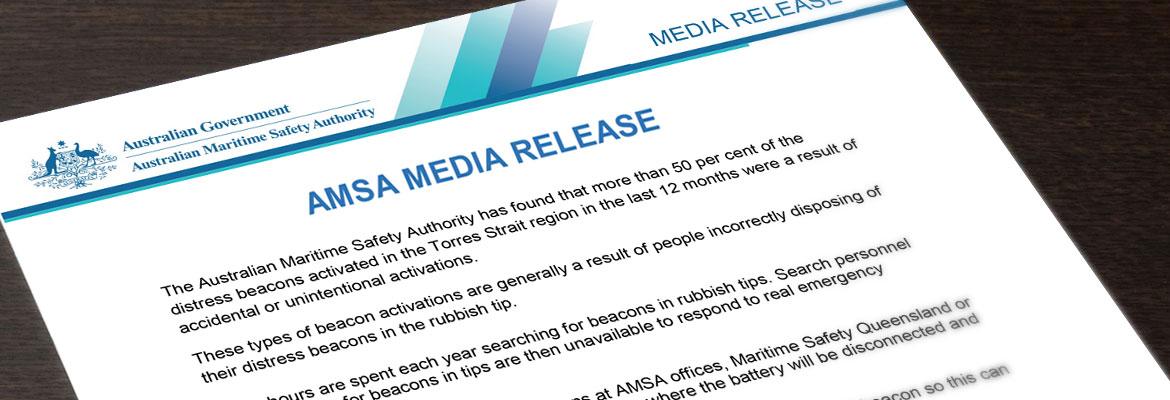
Over the past week, AMSA tasked multiple fixed wing aircraft and rescue helicopters to respond to 121.5MHz distress beacon signals that were heard by aircraft.
All incidents were false alarms and the result of inadvertent or self-activations of 121.5MHz distress beacons.
AMSA's acting General Manager Emergency Response Alan Lloyd said one beacon was traced to a garage sale in the Brisbane suburb of Manly, while another was found in a boat in the Darwin River Dam area in the Northern Territory.
'121.5MHz distress beacons should not be sold. These distress beacons were phased out in 2009 and replaced with 406MHz beacons,' Mr Lloyd said.
'The battery of the distress beacon found in the boat in the Northern Territory had expired in 2009. It is common for 121.5MHz beacons to activate themselves, especially if they are in a deteriorated state,' he said.
These beacons should be disposed at a Battery World store, or if this isn't possible, then the battery should be disconnected.
'These false alarms require the use of emergency response resources and personnel, which may be diverted from a genuine emergency. For the Darwin incident, AMSA's Darwin based search and rescue Dornier aircraft and a rescue helicopter were tasked to respond when the beacon signal was heard by aircraft.'
'Two 121.5MHz distress beacons were also heard in the Perth and Cairns areas. Rescue helicopters were tasked, however the signal dropped out after a short time and no signs of distress were observed,' he said.
An unregistered 406MHz beacon was also detected in Kalbarri in Western Australia. The beacon was homed to a boat and there was no emergency.
'In this incident, AMSA's search and rescue Dornier aircraft and a rescue helicopter were tasked to home the beacon signal and determine the nature of distress. Time and resources could have been saved by the beacon owner taking a few minutes to register their details with AMSA,' Mr Lloyd said.
'By registering your details, AMSA can contact you or your emergency contacts and quickly determine if an emergency exists or if your beacon has been inadvertently activated,' he said.
Registering your distress beacon with AMSA is free and can be done online in a few minutes. Registering your beacon will also result in a more efficient search and rescue effort. Only 406MHz distress beacons can be registered and many models are GPS encoded.
406MHz beacons transmit a unique code that identifies the individual beacon when it is activated. A registered 406 MHz beacon allows the Rescue Coordination Centre Australia to access the registration database and find contact details, details of registered vessels, aircraft or vehicles, and emergency contacts.
Beacons can be registered for free online or by phoning 1800 406 406. Information on beacon disposal is also available on AMSA's website.
Media enquiries: Lisa Martin 0429 504 267.